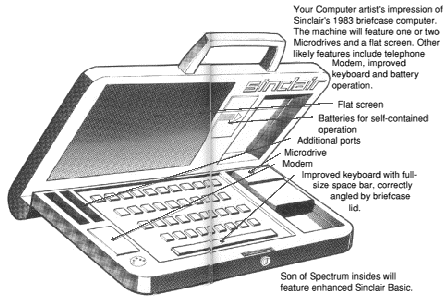

This made moving graphics difficult since the program had to introduce a pause for input to display the next change in graphical output. When running a BASIC program, or even when pressing a key for any input, the display would, therefore, black out momentarily while the processor was busy. As a result of this approach the ZX80 could only generate a picture when it was idle, i.e.
#SINCLAIR BASIC TV#
This was an idea that was popularised by Don Lancaster in his 1978 book The TV Cheap Video Cookbook and his "TV Typewriter".
#SINCLAIR BASIC GENERATOR#
The video display generator of the ZX80 used minimal hardware plus a combination of software to generate a video signal.
#SINCLAIR BASIC OFFLINE#
Video outputĭisplay was over an RF connection to a household television, and simple offline program storage was possible using a cassette recorder. There were problems with durability, reliability and overheating (despite appearances, the black stripes visible on the top rear of the case are merely cosmetic, and are not ventilation slots). The machine was mounted in a tiny white plastic case, with a one-piece blue membrane keyboard on the front it owed its distinctive appearance to industrial designer Rick Dickinson. BASIC commands were not entered by typing them out but were instead selected somewhat similarly to a scientific calculator - each key had a few different functions selected by both context and modes as well as with the shift key. The ROM contained the Sinclair BASIC programming language, editor, and operating system. (See ZX81 for technical details.) Both computers can be made by hobbyists using commercially available discrete logic chips or FPGAs. While the successor ZX81 used a semi-custom chip (a ULA or Uncommitted Logic Array), this merely combined the functions of the earlier hardware onto a single chip - the hardware and system programs (except the BASIC versions) were very similar, with the only significant difference being the NMI-generator necessary for slow mode in the ZX81. The ZX80 was designed around readily available TTL chips the only proprietary technology was the firmware.

Internally, the machine was designed by Jim Westwood around a Z80 central processing unit with a clock speed of 3.25 MHz, and was equipped with 1 kB of static RAM and 4 kB of read-only memory (ROM). The ZX80 was named after the Z80 processor with the 'X' for "the mystery ingredient".


 0 kommentar(er)
0 kommentar(er)
